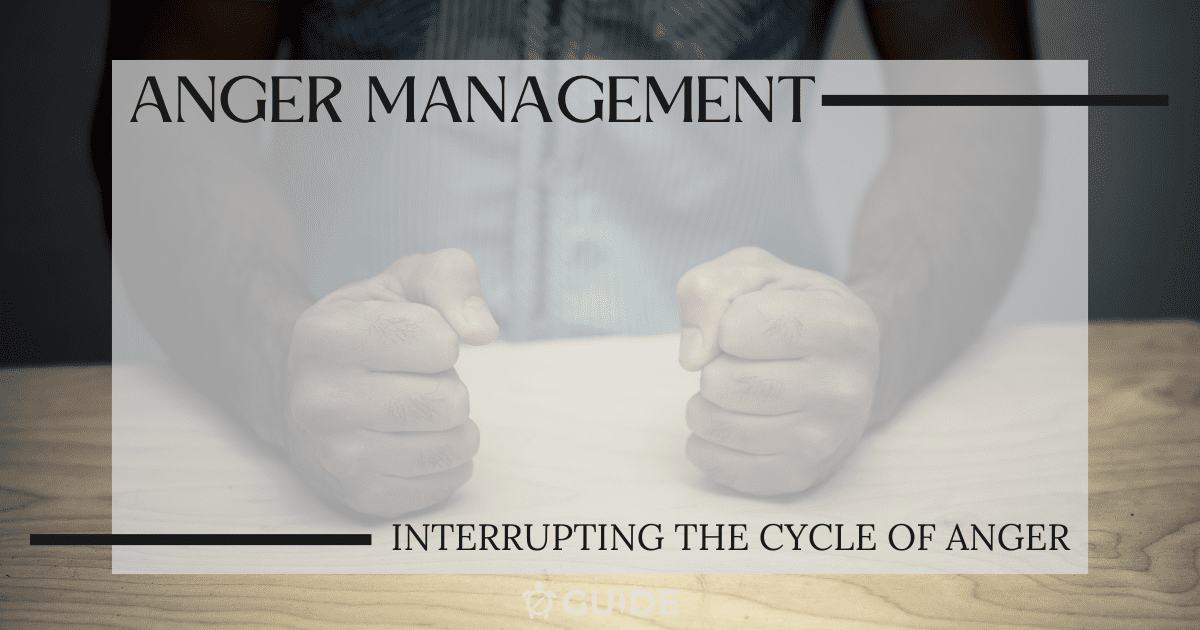by Justine Luzzi
Despite its negative reputation, anger is a natural, and even useful, human emotion. No one gets through life without experiencing anger, and yet, if it causes you to lose control, it can become disruptive to your quality of life and destructive to relationships. Fortunately, there are ways to understand your anger’s purpose, reduce its intensity, and regain control.
The Cycle of Anger
The Cycle of Anger refers to the cyclical pattern triggered by an upsetting event. You can also think of it in terms of a domino effect. The cycle of anger:
- Gets activated by a Triggering Event
- Which leads to Negative Thoughts
- That then result in an Emotional Response
- This will bring on Physical Symptoms
- That culminate in a Behavioral Response
By identifying and understanding your triggers, reframing your negative thoughts, processing your emotions, and becoming aware of your physical responses, you can learn to interrupt the Cycle of Anger before it leads to angry actions, explosive outbursts, or other destructive behaviors.
Identifying & Understanding Your Triggers
Identifying and understanding your triggers is essential when seeking to develop self-awareness, emotional maturity, and effective self-management. Start by paying close attention to your emotional reactions in different situations. When you feel a sudden surge of anger, frustration, sadness, or anxiety, take a moment to reflect on what happened just before those emotions arose. Ask yourself questions like, “What was I thinking,” “What did she say,” or “What was the context?” Recognize recurring patterns or situations that consistently provoke strong emotional responses. You may even find it helpful to keep a journal to track your triggers over time. Once you’ve identified them, strive to understand why these particular situations or thoughts trigger you. This introspection can empower you to develop healthy coping mechanisms, such as mindfulness or communication skills, and ultimately lead to increased emotional stability and overall feelings of well-being.
Reframing Negative Thoughts
Reframing angry thoughts is a crucial skill for effectively managing and mitigating negative emotions. When you notice anger bubbling up, take a moment to step back and analyze the thought that’s triggering your anger. Consider whether there might be an alternative, less infuriating perspective on the situation. Challenge the validity of your angry thoughts by seeking evidence that contradicts them. Practice empathy, and try to understand the other person’s point of view. Replace aggressive or hostile internal dialogue with more constructive self-talk. Remember that reframing angry thoughts is a learned skill, and with practice, it can help you respond to challenging situations with greater composure and understanding.
Processing Hidden Emotions
Anger is considered a secondary emotion, because there are usually other emotions underneath it that are fueling it. This is sometimes referred to as an “Iceberg of Emotions,” because despite how small an iceberg might look at the surface, in reality, it has a large root extending far beneath the surface. Anger often acts as a protective shield, masking those deeper, more vulnerable “root” feelings such as sadness, fear, or grief. To delve into these underlying emotions, it’s essential to pause and reflect when anger surfaces. By beginning to identify and process those below-the-surface emotions, you’ll likely begin to feel less anger over time, and be able to exercise more control when anger does arise.
There are many anger management tools and exercises that you can practice to help keep your behaviors and actions from escalating. While anger can feel overwhelming, there are ways to lessen its grip. You have the power to harness, diminish, and control your anger, instead of allowing anger to control you.
The GUIDE App offers a comprehensive array of lessons and exercises designed to empower users to curb and control their anger effectively, including mindfulness practices, cognitive-behavioral techniques, communication strategies, and journaling prompts. These lessons not only help users recognize the triggers and early warning signs of anger but also provide practical tools to defuse intense emotions before they escalate. We guide users in developing emotional regulation skills, fostering self-awareness, and enhancing their ability to respond to challenging situations with composure and empathy, resulting in healthier anger management and more harmonious relationships.
Click here to learn more about how bringing these tools to your department can help your team members to thrive.



